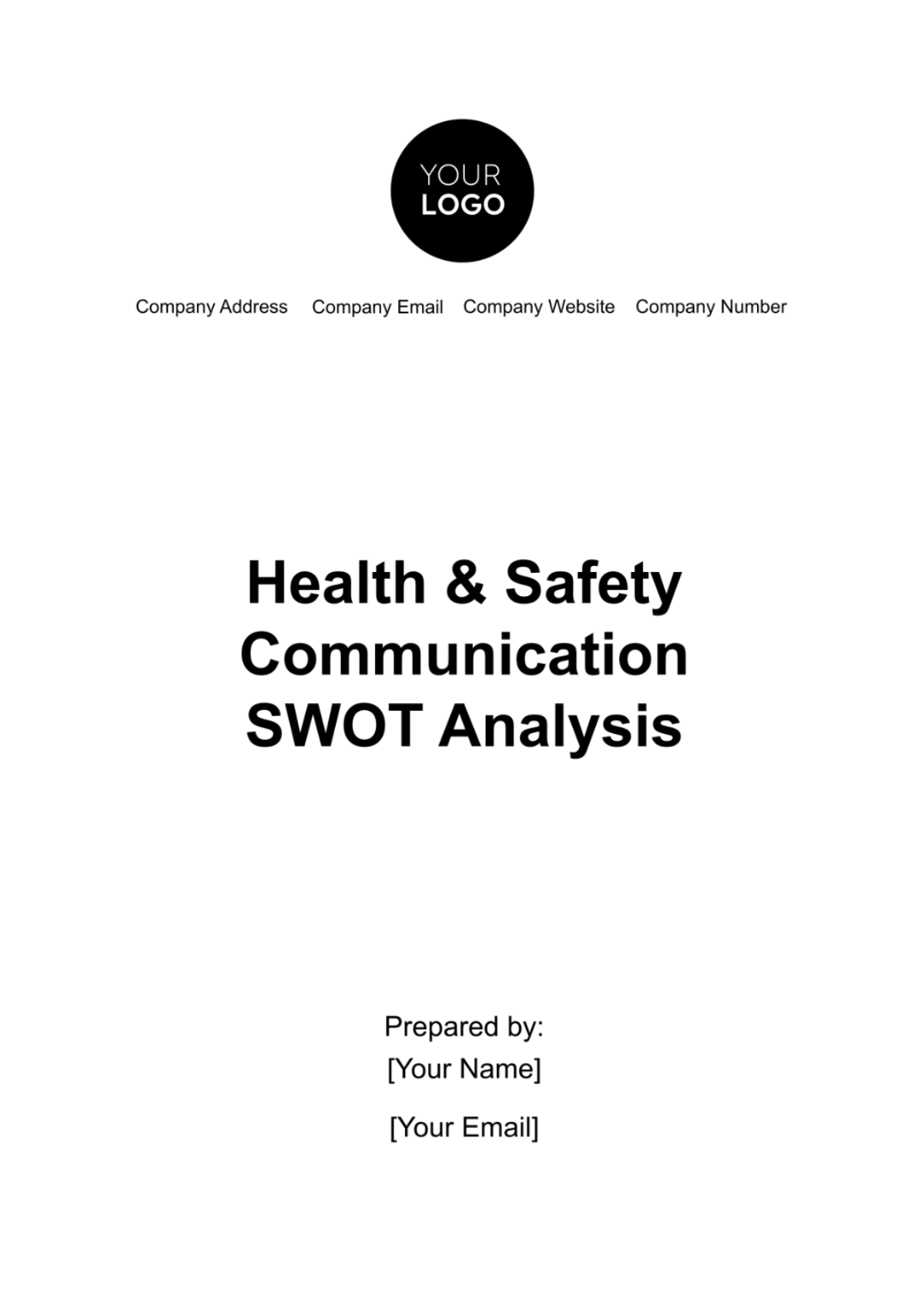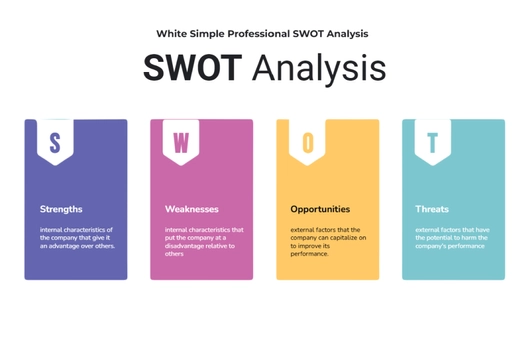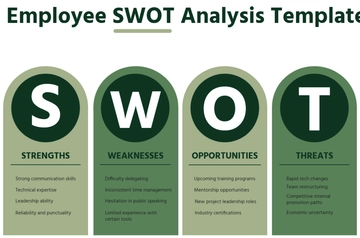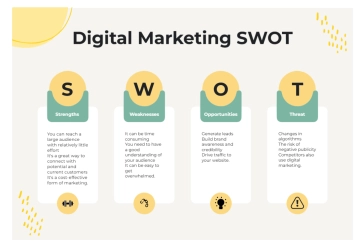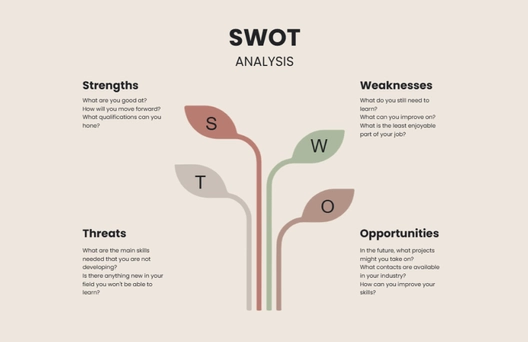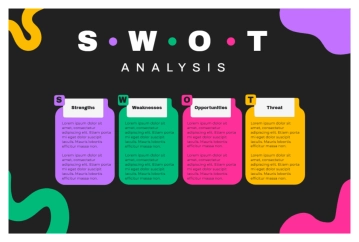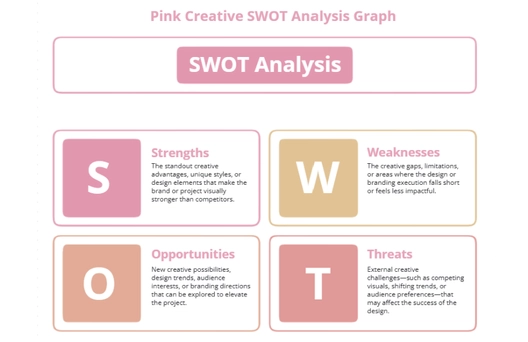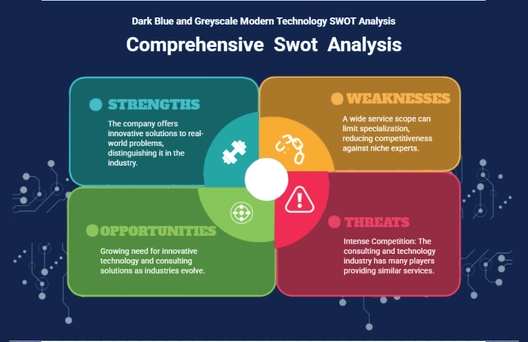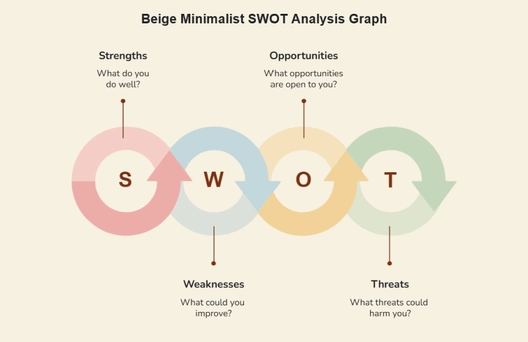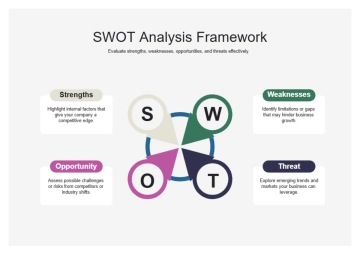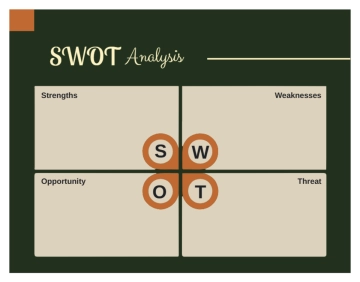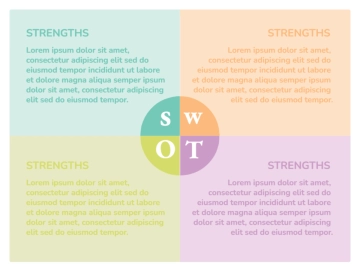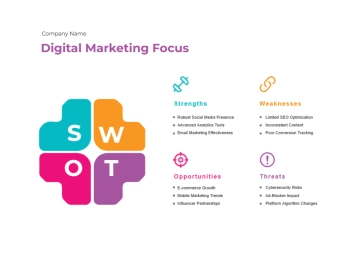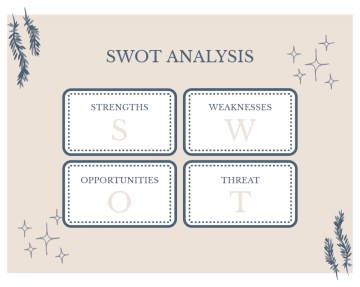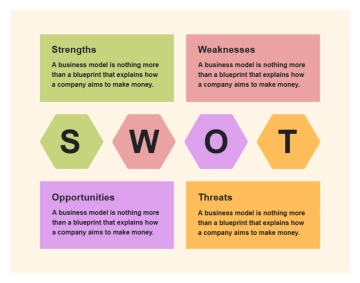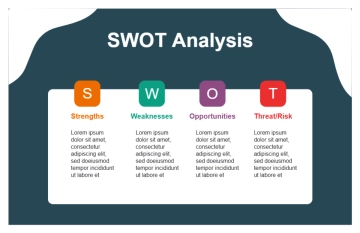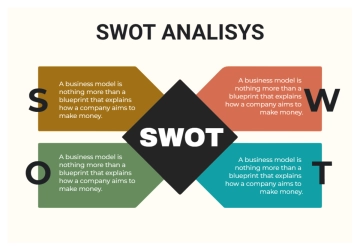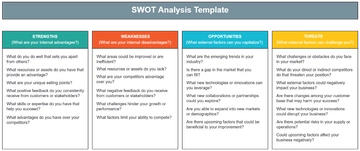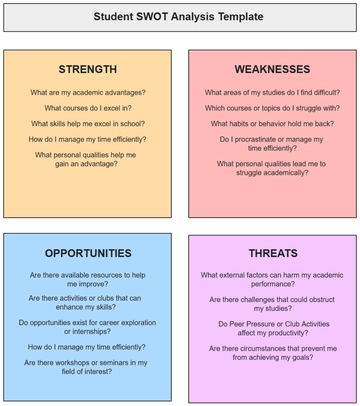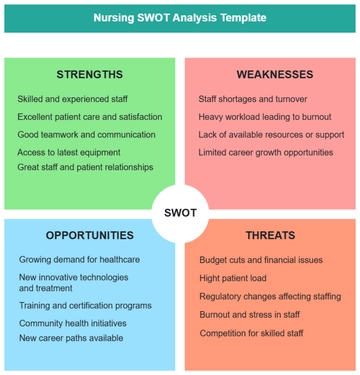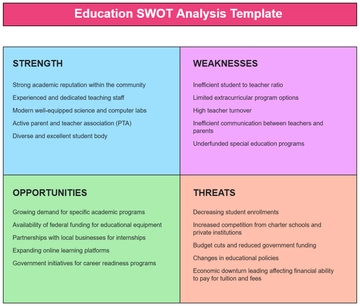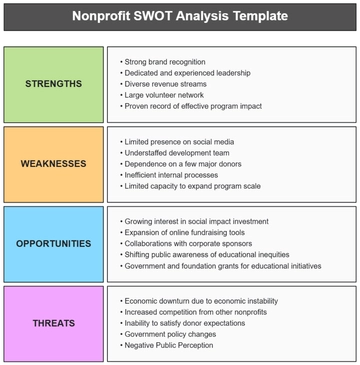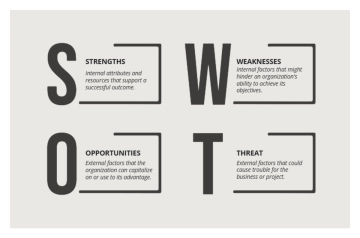Health & Safety Communication
SWOT Analysis
Introduction
The purpose of this SWOT (Strengths, Weaknesses, Opportunities, and Threats) Analysis is to critically evaluate our organization's health and safety communication strategies. This assessment aims to identify areas where we excel and areas that require improvement, providing a strategic foundation for enhancing our overall approach to health and safety communication.
Our current health and safety communication strategies are multifaceted, designed to reach employees at all levels of the organization. These strategies include regular health and safety briefings, distribution of informational materials, training sessions, and the use of digital platforms like the company intranet and email newsletters. Additionally, we have a system for reporting health and safety concerns and incidents, which allows for prompt action and communication regarding these issues.
However, as effective as our current strategies may be, it is essential to continually reassess and adapt our approach to meet the evolving needs of our workforce and the changing dynamics of our workplace. This SWOT analysis will help us to build on our strengths, address our weaknesses, seize new opportunities, and mitigate potential threats, ensuring our health and safety communication remains effective, comprehensive, and aligned with best practices.
Methodology
To conduct a comprehensive SWOT analysis of our health and safety communication strategies, a variety of methods were employed to gather relevant information. This multi-faceted approach ensured a well-rounded understanding of our current practices and their impact. The following methods were utilized:
Employee Surveys
An organization-wide survey was distributed to all employees. This survey focused on gauging the effectiveness of current health and safety communications, understanding employee perceptions, and identifying areas needing improvement. Questions ranged from the clarity and frequency of safety messages to the accessibility of health and safety resources.
One-on-One Interviews
A series of interviews were conducted with key staff members, including department heads, safety officers, and frontline employees. These interviews provided in-depth insights into the practical aspects of health and safety communication, revealing both the daily challenges and successes experienced by different departments.
Focus Groups
Focus group discussions were held with representatives from various employee groups. These sessions provided a platform for open conversation about health and safety communication, allowing for diverse perspectives and creative suggestions to emerge.
Data Review
An analysis of recent health and safety records was undertaken. This included examining incident reports, feedback forms, and participation logs in health and safety training sessions. The goal was to identify trends and correlations with our existing communication strategies.
Strengths
The following table highlights the key strengths identified in our current health and safety communication strategies, along with a brief analysis of each point:
Strength | Analysis |
Comprehensive Training Programs | Our training programs are thorough and cover a wide range of health and safety topics. They are designed to be accessible and engaging, contributing significantly to employee knowledge and awareness. |
Regular and Clear Communication Channels | We maintain regular communication through various channels like email newsletters, the company intranet, and safety briefings. This consistency ensures that health and safety remain a forefront concern. |
Active Employee Participation | High participation rates in safety training and surveys indicate strong employee engagement. This active involvement is crucial for the effectiveness of our safety programs. |
Diverse Communication Methods | Our use of multiple communication methods, including digital and physical materials, ensures we cater to different learning and communication preferences across the workforce. |
Effective Incident Reporting System | The incident reporting system is streamlined and user-friendly, encouraging prompt and accurate reporting of safety concerns and incidents. |
Weaknesses
The following table identifies key weaknesses in our current health and safety communication strategies, along with an analysis of each area:
Weakness | Analysis |
Limited Feedback Mechanisms | While we disseminate information effectively, there are limited channels for employees to provide feedback or voice concerns about health and safety issues. This gap could hinder our ability to respond to emerging issues or employee needs. |
Inconsistent Message Across Departments | There is a noticeable inconsistency in how health and safety messages are communicated across different departments. This variation can lead to confusion and a lack of uniformity in understanding and applying safety protocols. |
Lack of Tailored Content for Diverse Roles | Our communication does not always account for the specific needs and risks associated with different roles within the organization. Generic messages may not be as effective for employees in higher-risk positions. |
Overreliance on Digital Communication | Heavy reliance on digital channels (emails, intranet) may not be effective for all employees, particularly those who have limited access to digital platforms during work hours. |
Insufficient Reinforcement of Training | While initial training programs are comprehensive, there is a lack of ongoing reinforcement and refresher courses, which are crucial for maintaining a high level of safety awareness over time. |
Opportunities
This section explores potential opportunities for enhancing our health and safety communication strategies. Identifying these opportunities allows us to proactively improve and adapt our approach to meet the evolving needs of our workforce and organization. The following table outlines key opportunities and their potential impact:
Opportunity | Potential Impact |
Implementing Interactive Digital Platforms | Utilizing interactive digital platforms, such as mobile apps or online forums, can foster a more engaging and dynamic mode of communication. It could enhance accessibility and allow real-time updates and interactions. |
Developing Role-Specific Safety Communications | Tailoring safety messages to specific roles, especially for high-risk positions, can improve relevance and effectiveness, ensuring that all employees receive pertinent information that directly applies to their work environment. |
Establishing Regular Feedback Channels | Creating structured channels for employee feedback on health and safety matters can lead to more responsive and employee-centric safety strategies. This could include regular surveys, suggestion boxes, or dedicated feedback sessions. |
Integrating Health and Safety with Wellness Programs | Linking health and safety communication with broader employee wellness initiatives can create a more holistic approach to employee well-being. This integration can increase engagement and highlight the importance of safety as part of overall health. |
Ongoing Training and Refresher Courses | Implementing regular refresher courses and continuous training opportunities can reinforce initial training messages and keep safety at the forefront of employees’ minds. This approach ensures long-term retention and application of safety principles. |
Threats
Identifying potential threats, both internal and external, is crucial to ensuring the effectiveness of our health and safety communication strategies. This awareness allows us to proactively address and mitigate risks that could undermine our efforts to maintain a safe and healthy work environment. The table below outlines some key threats and their potential impact:
Threat | Potential Impact |
Rapid Technological Changes | New technologies can quickly make current communication methods outdated, leading to a possible gap in effective safety messaging. |
Regulatory and Legal Changes | Changes in health and safety regulations may require swift adaptations in our communication strategies, posing a challenge if not promptly addressed. |
Workforce Diversity and Language Barriers | A diverse workforce with varying language proficiencies can pose a challenge in ensuring that safety communications are understood by all. |
Remote Working and Dispersed Teams | The rise of remote working and geographically dispersed teams can create challenges in disseminating consistent safety messages and ensuring engagement. |
Information Overload | The risk of employees experiencing information overload, leading to important safety messages being overlooked or ignored. |
Recommendations
Following the SWOT analysis, the following strategic recommendations are proposed to enhance our health and safety communication:
Upgrade Digital Communication Platforms: Implement advanced, interactive digital platforms to make safety communications more engaging and accessible.
Develop Role-Specific Safety Messages: Tailor safety communications to address the specific risks and needs of different job roles within the organization.
Establish Regular Feedback Mechanisms: Introduce structured channels for collecting employee feedback on health and safety matters.
Integrate Safety into Wellness Programs: Link health and safety communication with broader wellness initiatives to create a more holistic approach to employee well-being.
Schedule Ongoing Training and Refresher Courses: Regularly update and offer refresher training courses to reinforce safety principles and practices.
Implementation Plan
This implementation plan outlines a structured approach to enhancing our health and safety communication strategies. By systematically addressing each recommendation, we can ensure the effectiveness and relevance of our safety communications, thereby fostering a safer and more informed workplace.
Month | Activity | Responsible Party | Required Resources |
Month 1 | Plan and design digital communication platforms | IT Department, Safety Officer | Budget for platform development |
Month 2-3 | Develop role-specific safety messages | Safety Officer, HR Team | Research and development resources |
Month 4 | Establish feedback mechanisms | HR Department | Survey tools, feedback systems |
Health & Safety Templates @ Template.net
